Pattern matching
Hemera provides two different ways to index your pattern efficiently. This functionality is provided by the Bloomrun package a js pattern matcher with results that can be returned in insertion order or depth order. Inspired by bloom filters.
Insertion order
By default all patterns are indexed in insertion order.
const hemera = new Hemera({
bloomrun: {
indexing: 'insertion'
}
})
// Matched
hemera.add(
{
topic: 'service',
cmd: 'a'
},
function(req, cb) {
cb(null, 1)
}
)
hemera.add(
{
topic: 'service',
cmd: 'a',
foo: 'bar'
},
function(req, cb) {
cb(null, 2)
}
)
hemera.act({
topic: 'service',
cmd: 'a',
foo: 'bar'
}) // return 1
Depth order
Depth indexing provides you more flexibility.
const hemera = new Hemera({
bloomrun: {
indexing: 'depth'
}
})
hemera.add(
{
topic: 'service',
cmd: 'a'
},
function(req, cb) {
cb(null, 1)
}
)
// Matched
hemera.add(
{
topic: 'service',
cmd: 'a',
foo: 'bar'
},
function(req, cb) {
cb(null, 2)
}
)
hemera.act({
topic: 'service',
cmd: 'a',
foo: 'bar'
}) // return 2
What's a pattern?
Any javascript object with the combination of properties from type boolean, string, regex and numbers. Any other type like e.g object will be handled as payload. For more informations look in the Bloomrun package.
Pattern definition
You can define a pattern in two different ways:
As JSON Object
hemera.add( { topic: 'math', cmd: 'add' }, (req, cb) => { cb(null, req.a + req.b) } ) hemera.act({ topic: math, cmd: add, a: 1, b: 2 })As quick syntax JSON Object provided by tinysonic package.
hemera.add('topic:math,cmd:add', (req, cb) => { cb(null, req.a + req.b) }) hemera.act('topic:math,cmd:add,a:1,b:2')
Hemera $ properties
In Hemera we use special $ suffixed properties to configure additional transport options in NATS or to pass informations to configure plugins. Please consider that those properties are not part of the pattern and will be ingored at pattern matching. They won't be send.
